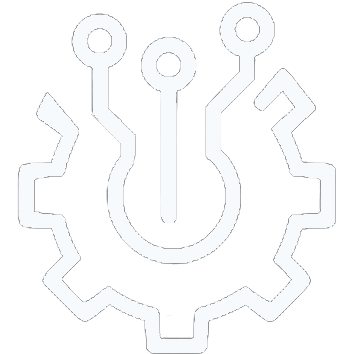Introduction
Communication isn’t just a soft skill. It’s the foundation of every high-performing engineering team. When done right, it enables clarity, alignment, and momentum. When neglected, it can slow down progress, create frustration, and even unravel otherwise great projects.
In engineering, where complex systems are built by cross-functional teams, communication is not optional, it’s strategic. Through my years of experience leading teams, I’ve seen communication make or break project outcomes.
Types of Communication in Engineering Teams
Asynchronous Communication
– Best for when people work across time zones or need focus time.
– Clear, concise, and context-rich messages are key.
Example: In one project, we introduced a practice where every update in Jira required a short note outlining context, blockers, and potential impact. This dramatically reduced confusion and duplicated work.
Another example: Quite often, we agreed with the Engineers to have our daily updates in writing, either in a specific shared file or in the dedicated channel in Slack. It helped everyone to stay updated despite the time zone they worked in.
Synchronous Communication
– Ideal for real-time alignment and fast decision-making.
– Requires active listening and making sure all voices are heard.
Example: In cases of sudden critical changes, production hotfixes, the best solution was to have a quick call to discuss further actions needed from each team member. This approach always reduces the time for troubleshooting.
Written vs. Verbal
– Written is better for traceability.
– Verbal is better for empathy and nuance.
Example: As already mentioned above, having daily updates written can help to keep track of performance as well as keeping the team accountable.
Another example: While written updates are essential for tracking progress and maintaining accountability, verbal communication, especially during 1:1s, plays a key role in supporting morale, offering real-time encouragement, and fostering trust on a more personal level.

Non-verbal Cues in Remote Work
– Emojis, response speed, punctuation, and formatting matter. For example, “ok” can sound passive-aggressive if not framed properly. Remote communication needs emotional intelligence.
Common Pitfalls & How to Avoid Them
– Assuming shared understanding: I’ve seen teams diverge for an entire sprint because assumptions were not clarified. I started a habit of closing discussions with a written “alignment summary.”
–Information overload: I once worked with a developer who would paste huge chunks of logs directly into Slack. To make communication more effective, we introduced a simple rule — always start with a short summary of the issue before sharing detailed logs or links. That way, everyone could quickly understand the context without having to sift through pages of text.
– Silence as a false signal: In retros, I realized some team members remained quiet not because they agreed, but because they didn’t feel confident enough to speak. I began inviting everyone in 1:1s to surface these unspoken concerns.
– Misaligned personalities: Pairing introverts with very talkative teammates sometimes caused tension. I helped them set communication preferences early on, and it smoothed collaboration significantly.
What Worked in My Experience
– Document decisions, not just status: We maintained a live “decision log” in Confluence during a complex EdTech project. This created a source of truth everyone trusted.
– Create psychological safety: I regularly reminded junior devs that questions are welcome. One new hire later told me they felt safe asking a question they were otherwise afraid to raise, which helped us catch a data sync issue early.
– Proactive communication culture: We used Slack updates with a format: ‘Yesterday / Today / Blockers’. One engineer started using this format daily, and it helped the entire team stay informed.
– Standups with purpose: We moved away from “status updates” and introduced a habit of asking, ‘Do you need help with anything today?’ It turned our standups into real-time unblocking sessions.
– 1:1s for alignment and mentorship: These allowed for private feedback, mentorship, and course correction. In one case, a developer was struggling to speak up in sprint reviews, so we practiced together in 1:1s, and within a month, they were confidently leading demos.
– Tone in written communication: I once softened a tense code review culture by introducing a rule: ‘Always say what you liked before you critique.’ It made PR discussions much more productive and human.
Communication in Crisis Moments
During one live classroom pilot, our EdTech platform experienced an API outage just as students and stakeholders joined the session. I immediately opened a Zoom with the team and another one with stakeholders.
While the backend team investigated, I calmly explained to stakeholders what was happening, provided a realistic ETA, and assured them that our team was on it. Meanwhile, I relayed real-time updates from engineers.
The issue was resolved within 15 minutes, but what stayed with me was how much the trust and transparency in that moment mattered more than the outage itself. Crisis is when leadership shows, and communication is its most vital tool.
Tailoring Communication to Different Team Members
Not everyone communicates the same way — and that’s okay. Part of my role as a manager was to adapt.
– For junior developers, I broke down larger decisions into digestible chunks and used Loom videos to walk them through architecture.
– With senior engineers, I favored collaborative architecture sessions and open-ended discussions where they could take initiative.
– For remote teammates in other time zones, I recorded meetings and provided written action items to ensure they were included asynchronously.
– I also asked everyone during onboarding how they preferred to receive feedback — some liked quick messages, others preferred scheduled 1:1s. That small question improved our team culture more than expected.
Tools & Techniques I Recommend
– Slack: Use threads, emojis, and async updates — don’t let everything disappear in the firehose of channels.
– Confluence or Notion: Document decisions, sprint goals, and retros.
– Loom: For code walkthroughs and visual explanations when async text isn’t enough.
– Rotating meeting facilitators: Makes everyone feel ownership and builds empathy.
– Communication templates: Having formats for PRs, daily updates, and incident reporting saves time and improves clarity.
Leadership Tip: Communication Starts With You
As a manager, how you show up — in words, tone, and consistency — shapes the team’s culture.
If you write clearly, they will too. If you stay calm during tension, others follow. If you’re vulnerable enough to admit when you miscommunicated, they’ll trust you more, not less.
Leadership is often quiet, and it sounds more like clarity, kindness, and the courage to listen deeply.
Conclusion
Communication isn’t a task. It’s your infrastructure. It connects the people to the purpose, the vision to the execution.
Whether you’re shipping features, managing conflict, or helping someone grow, every moment is a communication moment.
So speak with intention, listen with empathy, and lead with your words. Your team deserves it — and so do you.

Leave a Reply